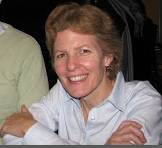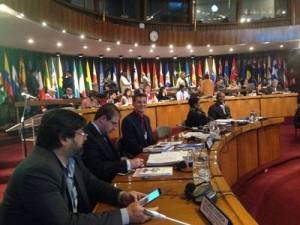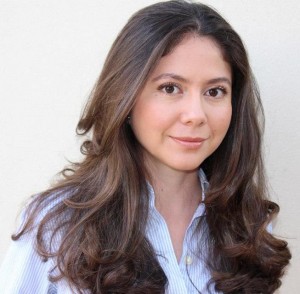by Mary Burns, Education Development Center
Motivation will almost always beat mere talent.
Norman Ralph Augustine
Why should we care about teacher motivation?
Talking with policymakers about the importance of motivating and motivated teachers can sometimes be met with blank stares. In many instances, thinking about teacher motivation may seem a luxury that education systems can ill afford; and many education leaders have adopted a default mindset that teachers are—almost by nature—unmotivated. This article discusses teacher motivation—what it encompasses, why teacher motivation matters, and what educational systems can begin to do to address teacher motivation.
“Teacher motivation” is a catalogue of intrinsic and extrinsic factors that encourage teachers to engage in certain practices and behaviors. To list a few, motivation includes a teacher’s job satisfaction; agency and well-being; sense of professionalism; degree of self-efficacy; feelings of worth and being valued; willingness and ability to complete all professional requirements; and receptiveness to reforms and innovations. Teacher motivation is often a function of expectancy (perceptions that their efforts will lead to student learning), instrumentality (the perception that they will be rewarded for their efforts) and valence (the desire of attaining those rewards) (Vroom, 1964, cited in Kelley & Finnigan, 2003).
Teacher motivation matters for several reasons.
Policy implications
Teacher motivation is critical from a policy perspective. Motivated teachers have lower rates of absenteeism and attrition (i.e., leaving the profession) than unmotivated (or demotivated) teachers. Absenteeism, and particularly attrition, result in teacher shortages and loss of instructional time, both of which stress the entire education system. Fewer teachers teaching mean larger classes which can exacerbate resource issues, adversely impact educational quality, and negatively influence student learning outcomes (especially in critical subject areas such as STEM). Teacher shortages, especially in rural areas and poor communities, exacerbate regional inequities, and many times, tensions. Additionally, teacher attrition places enormous financial burdens on educational systems — for example, in the U.S., $2.2 billion annually (Alliance for Excellent Education, 2015).
Program implications
Teacher motivation is also important for the advancement and implementation of educational reforms. Motivated teachers are more likely to embrace and enact specific educational reforms and support educational reform and progressive legislation in general (Jesus & Conboy, 2001).
From an implementation perspective, intrinsically motivated teachers undertake and complete professional tasks—such as transferring what they have learned in professional development to their classrooms. They do this, not simply to be compliant, but rather because they perceive the inherent value of such reforms or innovations (Jesus & Lens, 2005).
In addition to implementing reform and new practices from formal professional development opportunities, teacher motivation is also related to general teacher improvement. Broadly speaking, motivated individuals are more likely to focus on new ideas, devote more time to learning a task, and be more likely to remember and retain new information, and generally want to keep improving their craft. Motivation has an emotional component, so teachers who want to improve some aspect of their craft will be engaged by and enjoy the effort; believe such efforts will yield some kind of improvement to what they do; and feel greater satisfaction when they succeed. Again, these motivational aspects—expectancy, instrumentality and valence—may in fact help teachers consolidate new information (Speelman & Kirsner, 2005, cited in Abadzi, 2015).
Effects on Students
Motivation is also linked to practice. Teacher motivation is seen as a good predictor of teaching quality (Chalmers, 2007) and caring for students (Noddings, 2001). Both of these components—quality (and the bundle of behaviors that form part of quality) and care are the core of effective teaching (Ferguson et al., 2015). Indeed, research on teacher effectiveness suggests numerous linkages between teacher motivation, teacher effectiveness and student motivation. Motivated teachers are more likely to motivate their students to learn and help them learn more effectively. In essence, motivated teachers motivate their students.
—
Unfortunately, studies show that teachers suffer more than other professional groups from the occupational lack of motivation (Jesus & Conboy, 2001). Further, teaching, in many parts of the globe, has become an increasingly insecure profession. This is the result of budget cuts; weak national economies that cut public servants’ pay; poor remuneration; its lack of attractiveness as a professional destination vis-à-vis other occupations; and in many cases, the blame that governments and societies cast on teachers for the failures of the entire education system.
A lack of teachers, in particular, a lack of motivated teachers imperils both the education system and (since education and economic growth are so tightly linked) a country’s economic well-being. Therefore, how can policymakers begin to promote policies and initiatives that promote teacher motivation?
Factors that Impact Teacher Motivation
It’s important to first identify some of the factors that drive teacher motivation. While the list below does not encompass every aspect associated with motivation, it does suggest that the factors affecting teacher motivation are complex, discrete and interrelated:
• Social recognition/occupational status: In countries where the occupational status and social recognition of teaching are high (Singapore, Japan, China, and Finland), Ministries of Education are able to attract the best candidates to the teaching profession and retain them. They are also able to ensure, through extensive preparation or rigorous examinations, the “fitness” of these candidates to be teachers. Rigorous recruitment, high expectations for teachers, making the threshold for entry into the profession more exacting, mutual accountability (on the part of teachers and the institutions that prepare them) together confer a higher degree of respect, value, and professionalism—all of which are associated with teaching as a high occupational status.
• Pay and benefits: Teacher pay often arouses opposition from governments or the public at large, especially in low-performing educational systems. The evidence may be mixed on the degree to which increased pay (in the form of monetary incentives) and benefits contribute to motivation. However, low remuneration deters many potentially effective candidates from joining the profession and leads others to leave or hold extra jobs which in turn often leads to absenteeism and denigrated performance. Research is fairly consistent that salary and an appropriate system of incentives can both motivate and retain good teachers (Vaillant, 2006).
• Working conditions: Supportive, stable, safe, stimulating working environments, decent labor conditions, perceptions of being treated fairly, access to teaching materials and resources and an environment where teacher voice is heard, valued, and respected all contribute to teacher motivation and job satisfaction (NCTAF, 2016).
• Preparation and support: Quality preparation, professional development, mentoring, opportunities to learn with peers, supervisory feedback, and helping teachers along a trajectory of lifelong learning are tightly connected to classroom practice and to student learning (Vaillant, 2006). The quality of these professional learning experiences and their empirical impact on both teacher practice and student achievement is tightly linked to increased self-efficacy (the belief that he/she can teach well), teacher engagement and motivation (Timperley, 2008).
• Participation in reforms: Integrating teacher voice in formulating policies and programs that impact them as individuals, their working condition, their schools and their students (NCTAF, 2016) is also associated with teacher agency and teacher motivation. If the goals of a particular innovation or reform are clearly defined, moderately challenging, and accepted by teachers, they are more likely to embrace and enact them (Heneman & Milanowski, 1999).
Motivating Teachers to Motivate Students Motivated teachers instantiate many of the qualities that are associated with motivation and that are highly correlated with improved student learning outcomes. In brevi, motivated teachers motivate their students to learn and transcend the limits of their own expectations. As suggested by the previous section on factors that influence teacher motivation, there is much to do in the policy realm to create a critical mass of motivated teachers, especially in high-need, at-risk, more vulnerable communities and student populations.
Policy makers can and should collaborate with teachers and involve them in policy making decisions, versus ignoring them or involving them at the margins. Together, policy makers and teachers can move in new directions to promote higher qualifications, standards and accountability among all education officials, including teachers. But such policies must be accompanied by equally serious efforts to improve the status, professionalism and pay of the teaching profession.
Policymaking is often a reflection of larger public and societal values. In many parts of the globe, we need a societal “reset” on the value and importance of teaching and of being a teacher. Both in the public space and in government offices, teaching must be re-imagined for what it is and should be—a highly complex craft involving cross-cutting knowledge and skills in education, learning theory, psychology, sociology, clinical social work, pedagogy, content, technology, assessment theory, child and adolescent development, and communication theory—versus how it is currently regarded—as a semi-professional occupation in which anyone with a moderate level of education, low aspirations and a compromised work ethic engages. And we must do this quickly and seriously.
Teacher Motivation Working Group For more information, resources and tools about teacher motivation, please visit (and join) the Teacher Motivation Working Group website. This working group assembles research on the dynamics of teacher motivation around the world; identifies gaps in the research and guides an inter-organizational research agenda; and serves as a clearinghouse for lessons on teacher motivation and recommendations for improving and sustaining teacher motivation as part of the effort to improve student learning outcomes.
References
-
Abadzi, H. (2015). Training the 21st-century worker: Policy advice from the dark network of implicit memory. Retrieved from http://www.ibe.unesco.org/sites/default/files/resources/wp-16-training_21st_century_worker_eng.pdf
-
Alliance for Excellent in Education. (2014). On the path to educational equity: Improving the effectiveness of beginning teachers. Retrieved from http://all4ed.org/wp-content/uploads/2014/07/PathToEquity.pdf
-
Burns, M. & Guajardo. J. (2014, February). Teacher motivation in low–income contexts. Global Partnership for Education, Education for All Blog. Retrieved from http://www.globalpartnership.org/blog/teacher-motivation-low-income-contexts
-
Chalmers, D. (2007). A review of Australian and international quality systems and indicators of learning and teaching. Sydney, Australia: Carrick Institute for Learning and Teaching in Higher
Education Ltd.
-
Ferguson, R., Phillips, F., Rowley, J.S.F. & Friedlander, J.W. (2015, October). The Influence of teaching beyond standardized test scores: Engagement, mindsets, and agency. Retrieved from http://www.agi.harvard.edu/projects/TeachingandAgency.pdf
-
Heneman, H. G., & Milanowski, A. (1999). Teacher attitudes about teacher bonuses under school-
based performance award programs. Journal for Personnel Evaluation in Education, 12(4), 327-
342
-
Kelley, C.J. & Finnigan, K. (2003). The effects of organizational context on teacher expectancy. Educational Administration Quarterly, 39: 603. DOI: 10.1177/0013161X03257299
-
Jesus, S. N., & Lens, W. (2005). An integrated model for the study of teacher motivation. Applied Psychology: An International Review, 54(1), 119-134.
-
Jesus, S. N. & Conboy, J. (2001). A stress management course to prevent teacher distress. The International Journal of Educational Management, 15(3), 131-137.
-
National Commission on Teaching and America’s Future. (2016). What matters now: A new compact for teaching and learning. Washington, DC: Author
-
Noddings, N. (2001). The caring teacher. In V. Richardson (ed). Handbook of Research on Teaching (4th ed.). Washington, DC: American Educational Research Association, 99–105.
-
Timperley, H. (2008). Teacher professional learning and development. Educational Practices Series, 18. Geneva, Switzerland: International Academy of Education and International Bureau of Education.
-
Vaillant, D. (2006). Documentos de Trabajo de la OIE sobre el Currículo No 2, julio de 2006. SOS Profesión Docente: Al Rescate del Currículum Escolar. Retrieved from http://www.ibe.unesco.org/resourcebank/working_papers.htm
 Mary Burns (mburns@edc.org) is a senior learning technologist at Education Development Center. She works on issues around teacher quality and teacher professional development across the globe—contributing to policy and research, designing teacher professional development and support programs, and teaching and coaching primary, secondary and university instructors. Mary speaks Spanish, French and Portuguese and has published widely on teacher professional development and instruction.
Mary Burns (mburns@edc.org) is a senior learning technologist at Education Development Center. She works on issues around teacher quality and teacher professional development across the globe—contributing to policy and research, designing teacher professional development and support programs, and teaching and coaching primary, secondary and university instructors. Mary speaks Spanish, French and Portuguese and has published widely on teacher professional development and instruction.







